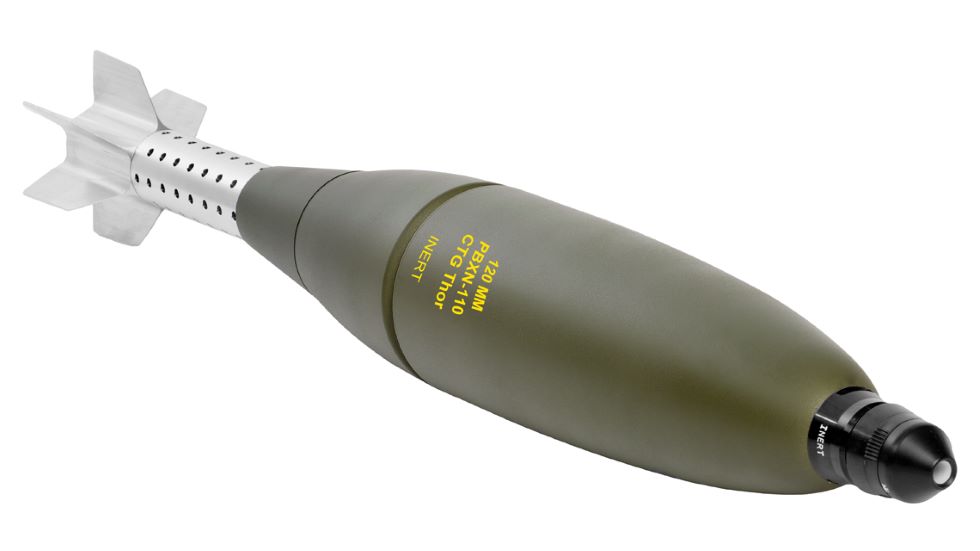Project Description

SMALL DIAMETER, BIG IMPACT
CLIENT: Appelberg Publishing Stockholm
PUBLISHED: Saab Group website/Facebook
ORIGINAL ARTICLE: Small diameter, big impact
CREATED: May 2018
AUTHOR: Fallon Dasey
With mortars increasingly replacing artillery in the modern battlefield, combat battalions have been searching for greater fire power. THOR 120mm mortar ammunition closes the capability gap, delivering an effect comparable to a 155mm artillery shell.
Artillery is one of the most devastating weapons at the disposal of combat battalions, capable of destroying hardened vehicles and breaching structures. But changes in battlefield tactics and military funding in recent years have seen artillery systems fall somewhat out of fashion. Their high operational costs and size has seen them replaced in many situations by mortar systems offering superior portability and cost effectiveness.
The problem is that, up until now, conventional mortars have lacked comparable fire power, creating a capability gap that has limited the effectiveness of combat forces. This gap is now set to be closed with the arrival of a new generation 120mm mortar round from Saab, capable of similar effect to 155mm artillery shells while offering the agility and cost effectiveness of a mortar system. THOR mortar ammunition uses pre-fragmentation technology, allowing users to predict each round’s lethal radius, thus reducing collateral damage and increasing effectiveness.
“Our goal was to provide armed forces with a 120mm mortar weapon for battalion support that had the same effect as a 155mm shell,” says Christopher Leitner, Head of Marketing and Sales at Saab Bofors Dynamics Switzerland. “And because most tank or infantry battalions only cover an area of five to seven kilometres, the eight to 10-kilometre range of a 120mm mortar is a good fit.”
Trend for autonomous mortars
Leitner explains in recent years the United Stated and a range of European armed forces have been investing heavily in mobile, autonomous mortar systems to support combat battalions. “With a traditional trench mortar system, you might have a week to get in position,” he says. “But operational requirements are moving away from having static positions.” Because of their size, 155mm cannons are not particularly suitable for these duties meaning there has been a call for more effective and powerful mortar systems.
Insensitive munitions
Leitner says that the THOR ammunition is compatible with all NATO mortar systems, including dismounted and breach-loaded turreted systems. Its compact size mean that it can be easily carried by mobile, autonomous mortar systems. The THOR munitions are also insensitive, meaning they can withstand a range of stimuli without detonating, improving user safety.
“Your turret might come under fire from a 30 to 40mm gun machine canon and some projectiles might penetrate your hull and ammunition,” says Leitner. “With conventional ammunition, this would trigger an explosion that would destroy the vehicle and personnel, but this won’t happen with Thor.”
The new ammunition employs similar pre-fragmentation technology to that used in the missile warheads developed at Saab Bofors Dynamics Switzerland. Rather than each round exploding in a random fashion, the technology allows shrapnel to be targeted in optimal directions. “Pre-fragmentation provides you with a very predictable lethal radius and this reduces collateral damage and increases effectiveness,” says Leitner.
The god of thunder
Leitner explains the name chosen for the ammunition has a highly significant double meaning. “It comes in part from Thun Ordnance, a reference to Thun in Switzerland where THOS was developed,” he says. “But it’s also a reference to Nordic mythology where THOR was the god of thunder. He carried a hammer called Mjölnir that was one of the most fearsome and powerful weapons. So, the name seems appropriate.”



